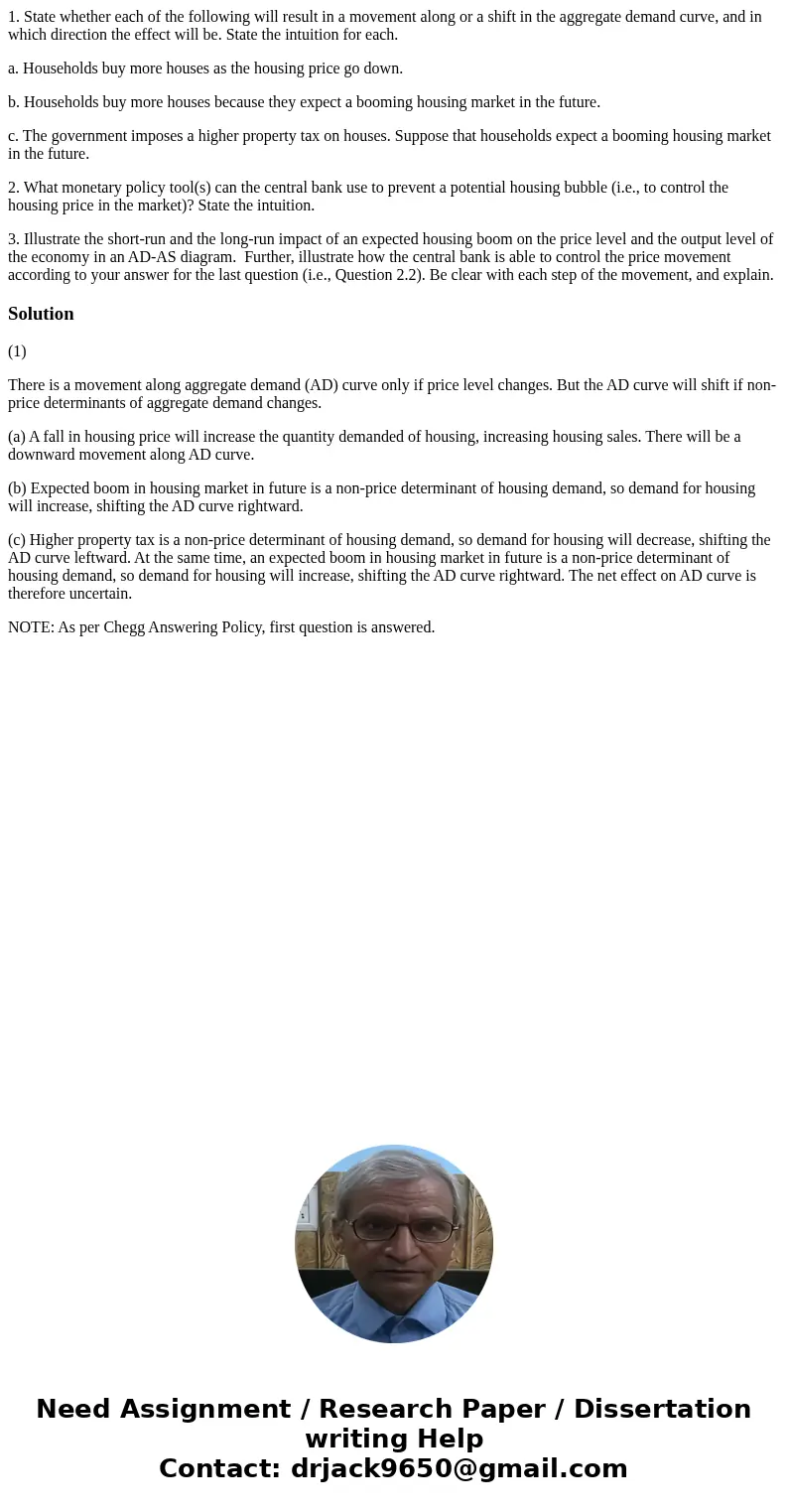1 State whether each of the following will result in a movem
1. State whether each of the following will result in a movement along or a shift in the aggregate demand curve, and in which direction the effect will be. State the intuition for each.
a. Households buy more houses as the housing price go down.
b. Households buy more houses because they expect a booming housing market in the future.
c. The government imposes a higher property tax on houses. Suppose that households expect a booming housing market in the future.
2. What monetary policy tool(s) can the central bank use to prevent a potential housing bubble (i.e., to control the housing price in the market)? State the intuition.
3. Illustrate the short-run and the long-run impact of an expected housing boom on the price level and the output level of the economy in an AD-AS diagram. Further, illustrate how the central bank is able to control the price movement according to your answer for the last question (i.e., Question 2.2). Be clear with each step of the movement, and explain.
Solution
(1)
There is a movement along aggregate demand (AD) curve only if price level changes. But the AD curve will shift if non-price determinants of aggregate demand changes.
(a) A fall in housing price will increase the quantity demanded of housing, increasing housing sales. There will be a downward movement along AD curve.
(b) Expected boom in housing market in future is a non-price determinant of housing demand, so demand for housing will increase, shifting the AD curve rightward.
(c) Higher property tax is a non-price determinant of housing demand, so demand for housing will decrease, shifting the AD curve leftward. At the same time, an expected boom in housing market in future is a non-price determinant of housing demand, so demand for housing will increase, shifting the AD curve rightward. The net effect on AD curve is therefore uncertain.
NOTE: As per Chegg Answering Policy, first question is answered.

 Homework Sourse
Homework Sourse